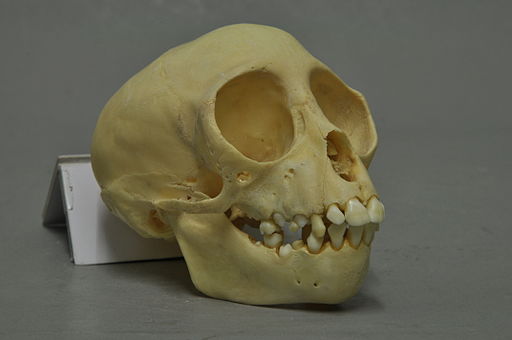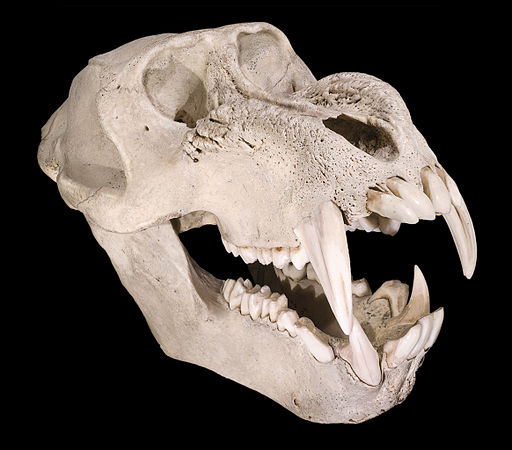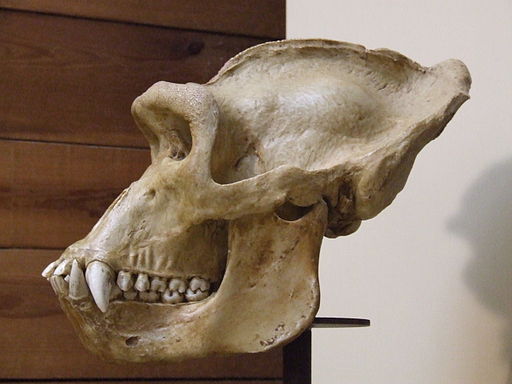So you’re creating a fantastic world for your story. Naturally, you want to populate it with fantastic beings. To pull this off, those beings still have to follow certain rules of anatomy and physics (unless you’re making up your own physics, in which case, good luck). Even if readers don’t fully understand the anatomy of real-world creatures similar to yours, they very well might realize something is amiss without knowing precisely why–people can be pretty damn smart, and you want smart readers, right? Okay then.
This is an extremely broad subject, so I’m going to tackle a small detail to make my point: primate skull shapes. This came up while at the Smithsonian National Museum of Natural History with my daughter. Being the full-time badass she is, she threw out details and facts throughout. When we got to a display of small primate skeletons, she noted how some are smoothly rounded, like a human’s, and some had bony ridges across the top.
You know what a human skull looks like, so let’s look at something cute, like a spider monkey.

The skull is rounded, with wide open eye sockets. No bony ridges on top. Spider monkeys–and humans–have smooth skulls because we have weak little flappy jaw muscles that don’t need much room to anchor to the skull.
By contrast, here is a mandrill skull. The stronger the jaw muscles, the more room they need to attach to the skull (or else they’d tear off of the skull under their own power). The bony ridges (which you can just see on the back of the skull) allow more surface area for the jaw muscles to attach.

Wait, it gets better. Have you ever noticed how pointed a gorilla’s head is? It’s because they have FREAKING HUGE bony ridges. Which means REALLY POWERFUL JAWS. They need all that extra skull square footage for those massive muscles.

You might also notice that the skulls of primates with the large bony ridges associated with jaw muscles also have larger brow ridges. This has to do with the muscular structure of the head, and it’s going to affect the overall appearance of the animal.
The physiological appearance of animals is dependent on their underlying structure. Primates with powerful jaws have a distinctive appearance. So if you wanted to make up a race of aliens that are humanoid, but have super strong jaws, they should look more like the basic gorilla structure than human. Same for any other unique cranial elements; you need to consider how that would really work and adjust their appearance accordingly. The same would also hold for other musculature, like if arms or legs were particularly strong, or if they had more than the usual number of limbs.
It’s subtle detail that’s important for a realistic touch. And you’re kidding yourself if you think readers wouldn’t notice if you didn’t do it right. People may not consciously know all of these details, but they know when something feels off. And they don’t like it.
Maybe I’ll tackle the physiology of snake skulls next. Don’t anyone hold their breath for that to happen quickly, though.
That was bone-a-rific!